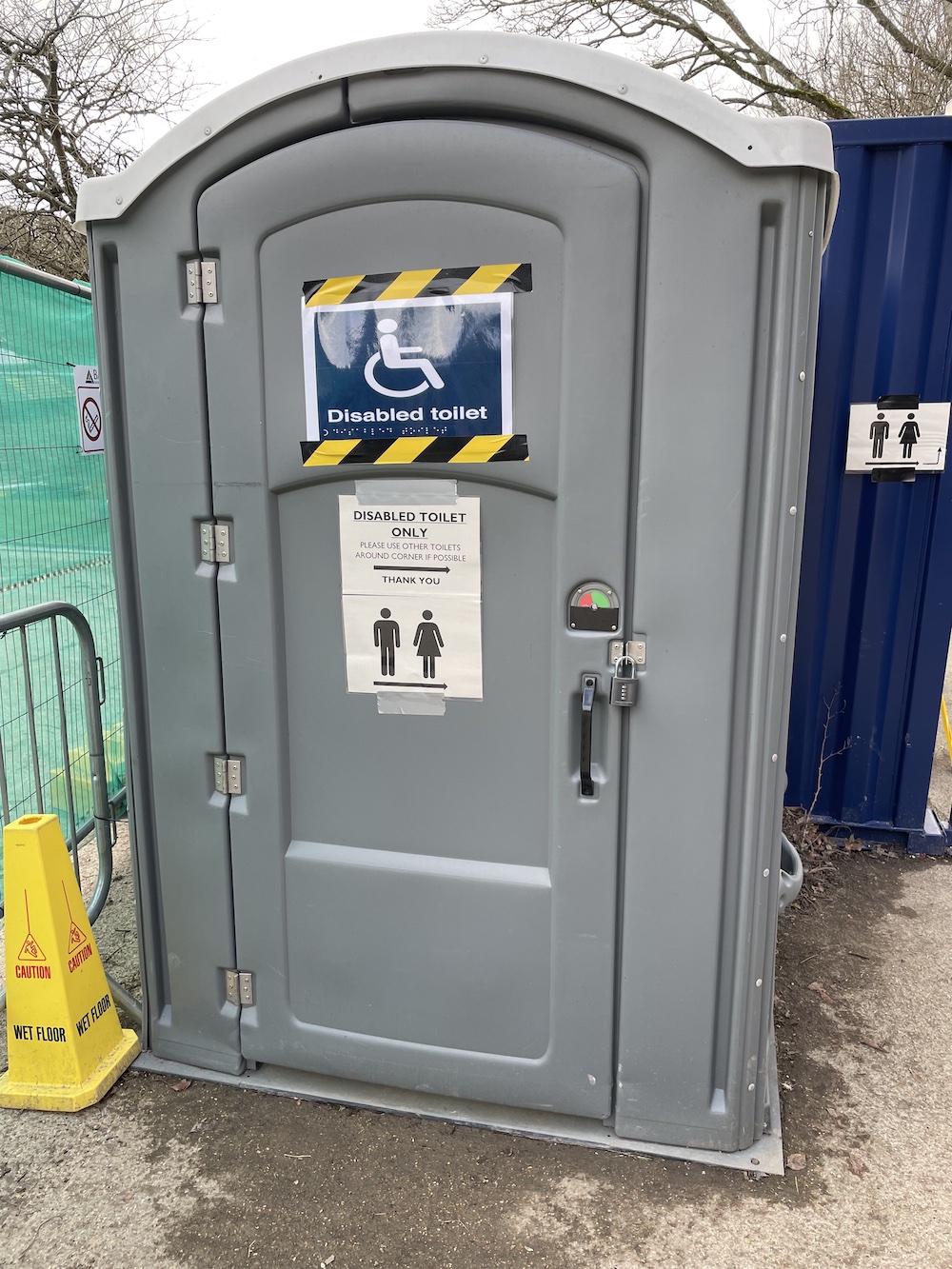
Around the time of my wife and I’s wedding anniversary, to celebrate, we took Monday afternoon off and went for a walk at a local nature reserve before going out to dinner.
In the days running up to our anniversary, we had experienced a few stormy days, so we were relieved when the storm abated, allowing us to enjoy a nice walk.
As we finished our walk and before heading home in the car and then on to dinner, we went looking for the public toilets.
The toilets that we found were temporary affairs located at the rear of the nature reserve’s visitor center due to the fact that, at the time, the center was having some extensive renovation work done to it.
After using the facilities, we noticed the door to the accessible toilet (see the picture below).

What’s wrong with this picture?
Here are a couple of additional data points that will add some context to the picture.
- Both of the able-bodied toilets that my wife and I used were not locked, and
- While there was renovation work going on at the visitors center, there was no one on site at the time or, at least, they were nowhere to be seen.
Given all of that: What’s wrong with this picture?
Now, I am sure you will have spotted what I saw.
But, if not, then let me point out to you that the door to the accessible toilet in the picture is locked with a combination lock padlock.
I was horrified when I saw this, and I found myself asking:
- Why are the accessible toilets locked when the other toilets are not?
- Why should a person with a disability who may want to use those toilets have to exert extra effort (i.e. go and find someone who knows the combination for the lock) to go to the bathroom?
- What sort of welcome does that provide them with?
- What sort of message does it send?
- And, what are they to do if they can’t find anyone with the combination for the lock?
Some people may look at the picture and think that this is a small thing.
It’s not.
It’s clumsy, unthinking and insensitive and ignores a person’s needs who might want to use that facility.
Too often, what may be seen by one person as a small thing can significantly impact someone else’s experience.
But, these types of incidences are not isolated.
Too many of our services and experiences are still not inclusively designed, operated or managed, and that’s a problem.
Forrester, in late 2020, highlighted the need for experiences to be more inclusive when reflecting on the initial impact of the pandemic on customer experience (CX). They went on to predict that 2021 was going to be the year of inclusive CX.
However, while things may be improving and may have improved since then, we are not there yet.
To make things better (for everyone), it is incumbent on those of you who conceive, design, develop, operate and manage services and experiences to look for and pay attention to the details and how they impact different people. Once you have identified things that can prove a barrier or a challenge to some, then work hard and fast to remove them.
In addition, we, as customers, also have a responsibility to let organizations know when they are falling short. Not in a shouty and complaining manner. We get enough of that in certain parts of social media right now. But, as an interested and concerned customer, who understands that it is unreasonable to expect an organization to be omniscient, and just wants the organizations and the brands we support to do and be better.
This is a slightly edited version of a post that was originally published on Forbes.com.
Image by Gerd Altmann from Pixabay



